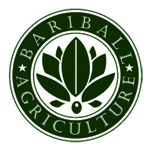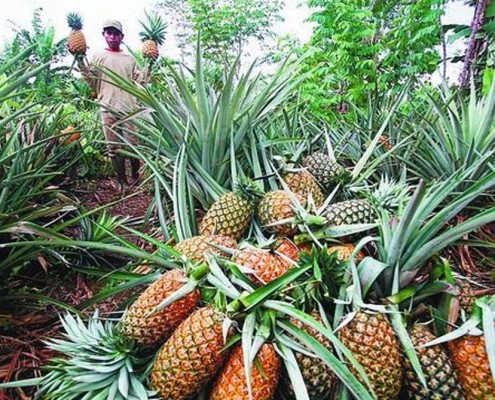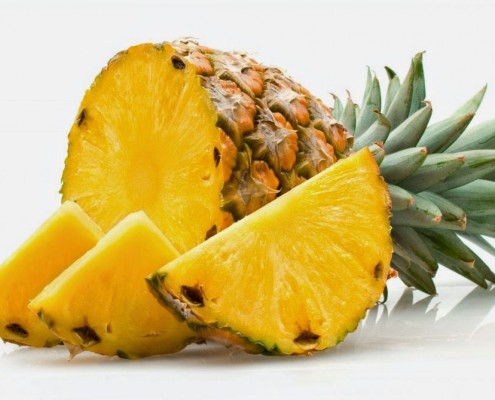The pineapple (Ananas comosus) is a tropical plant with edible multiple fruit consisting of coalesced berries,[ and the most economically significant plant in the Bromeliaceae family. Pineapples may be cultivated from a crown cutting of the fruit, possibly flowering in 20–24 months and fruiting in the following six months. Pineapple does not ripen significantly post-harvest.
Pineapples can be consumed fresh, cooked, juiced, and preserved, and are found in a wide array of cuisines. In addition to consumption, the pineapple leaves are used to produce the textile fiber piña in the Philippines, commonly used as the material for the men’s Barong Tagalog and women’s Baro’t saya formal wear in the country. The fiber is also used as a component for wallpaper and other furnishings.
The flesh and juice of the pineapple are used in cuisines around the world. In many tropical countries, pineapple is prepared, and sold on roadsides as a snack. It is sold whole, or in halves with a stick inserted. Whole, cored slices with a cherry in the middle are a common garnish on hams in the West. Chunks of pineapple are used in desserts such as fruit salad, as well as in some savory dishes, including pizza toppings and a grilled ring on a hamburger.[14][15] Crushed pineapple is used in yogurt, jam, sweets, and ice cream. The juice of the pineapple is served as a beverage, and is also as a main ingredient in such cocktails as the piña colada.
Nutrition
Raw pineapple is an excellent source of manganese (76% daily value (DV) in a one US cup serving) and vitamin C (131% DV per cup serving). Mainly from its stem, pineapple contains a proteolytic enzyme, bromelain, which breaks down protein. If having sufficient bromelain content, raw pineapple juice may be used as a meat marinade and tenderizer. Pineapple enzymes can interfere with the preparation of some foods, such as jelly and other gelatin-based desserts, but would be destroyed during cooking and canning. The quantity of bromelain in the fruit is probably not significant, being mostly in the inedible stalk. Furthermore, an ingested enzyme like bromelain is unlikely to survive intact the proteolytic processes of digestion.


